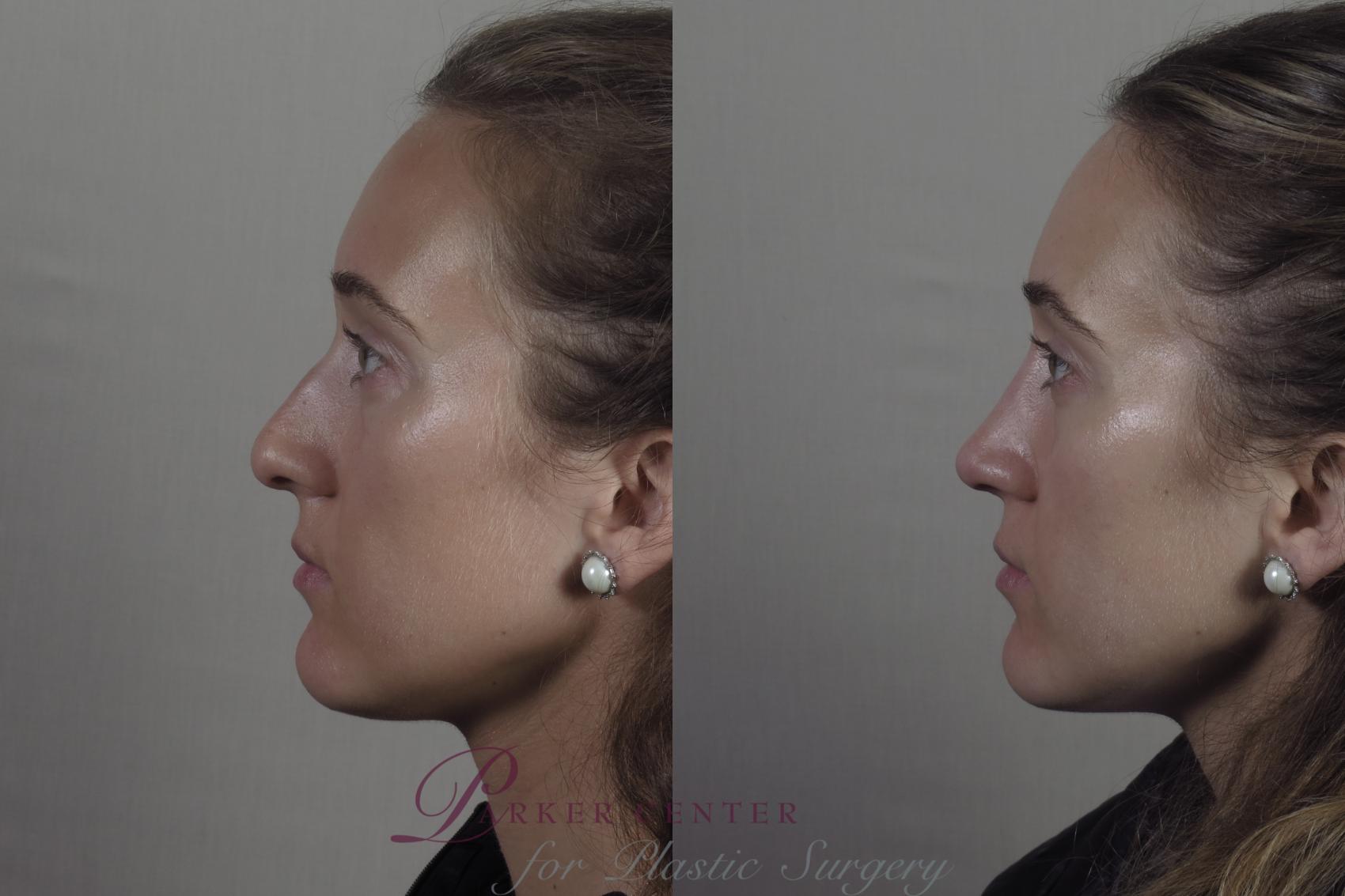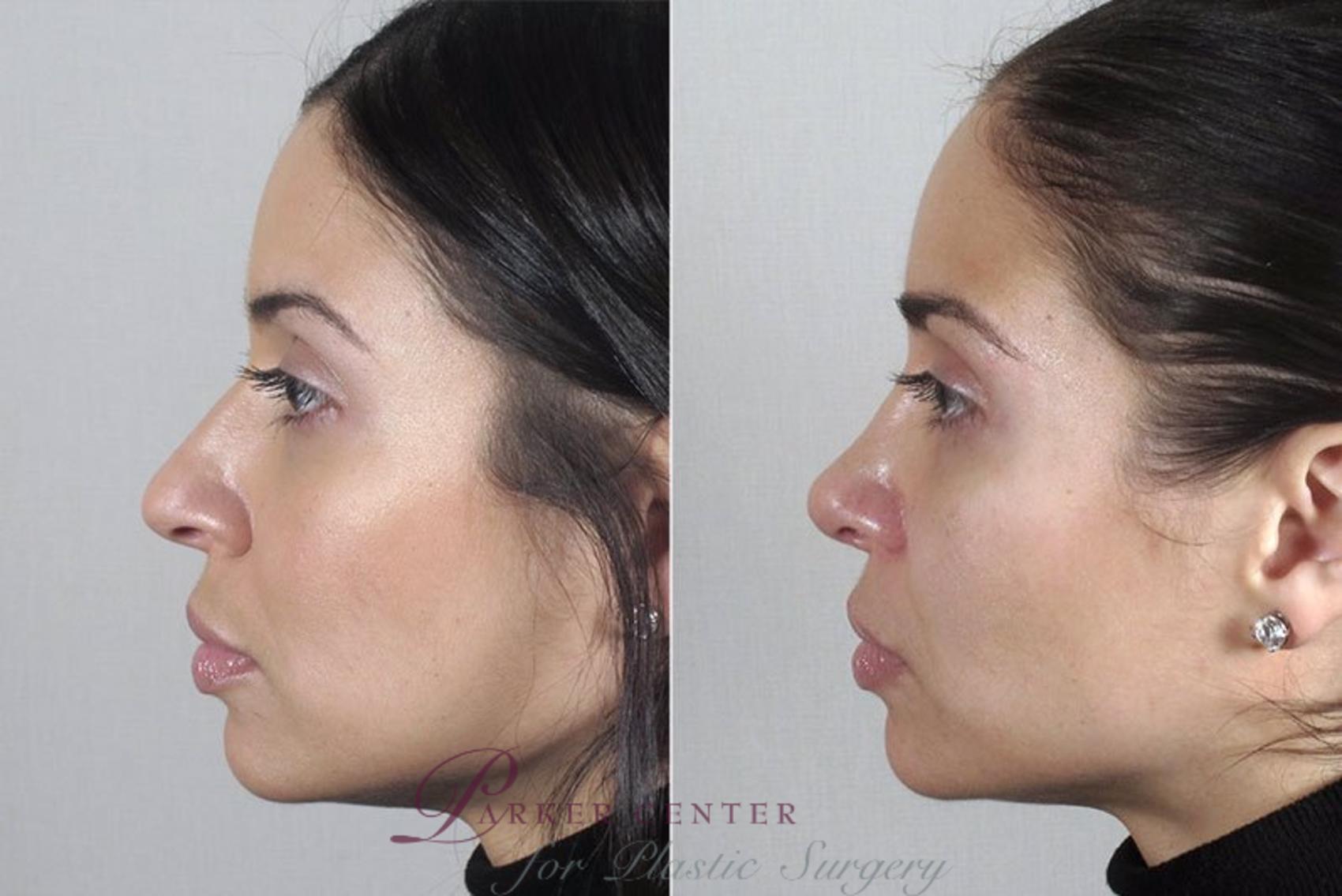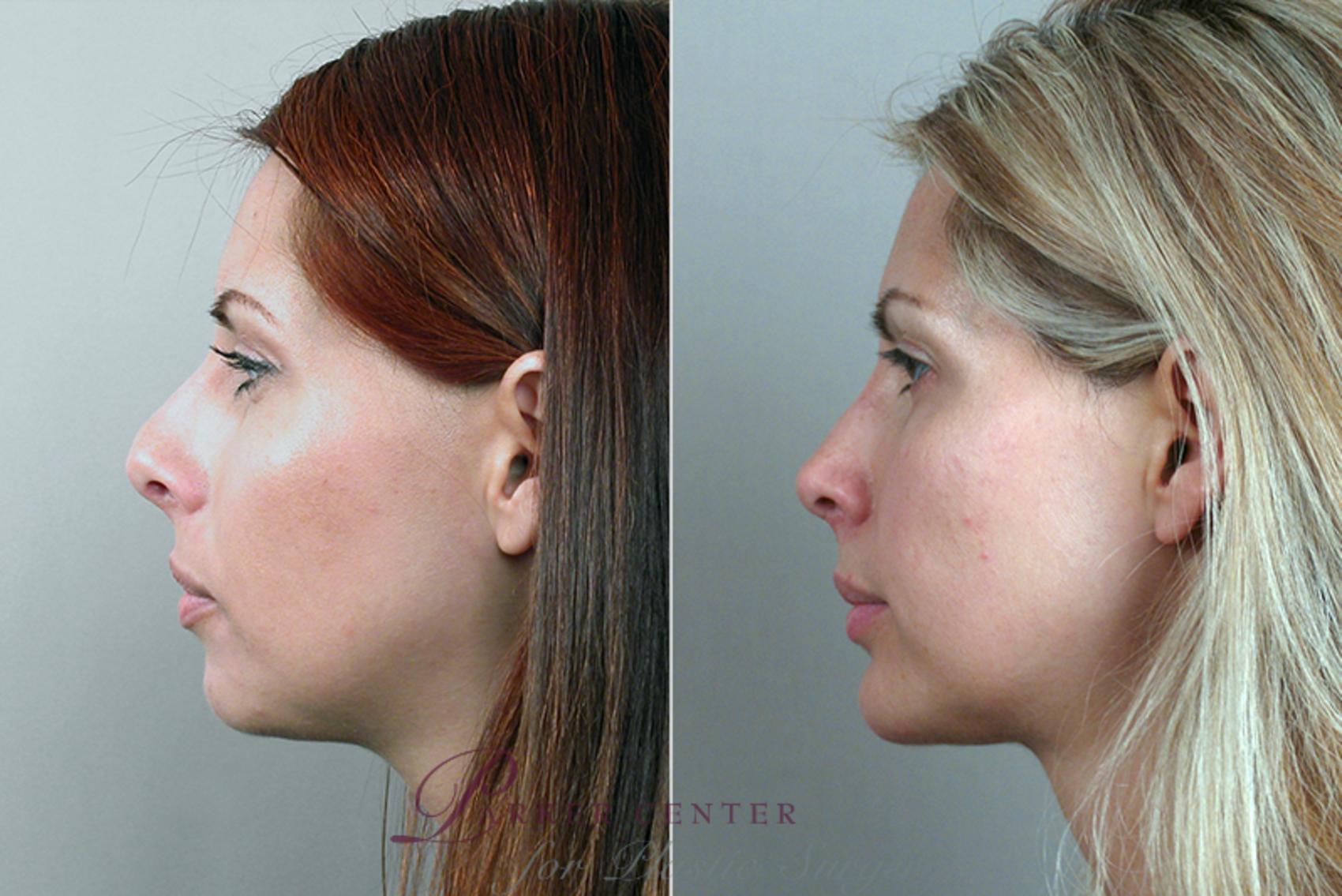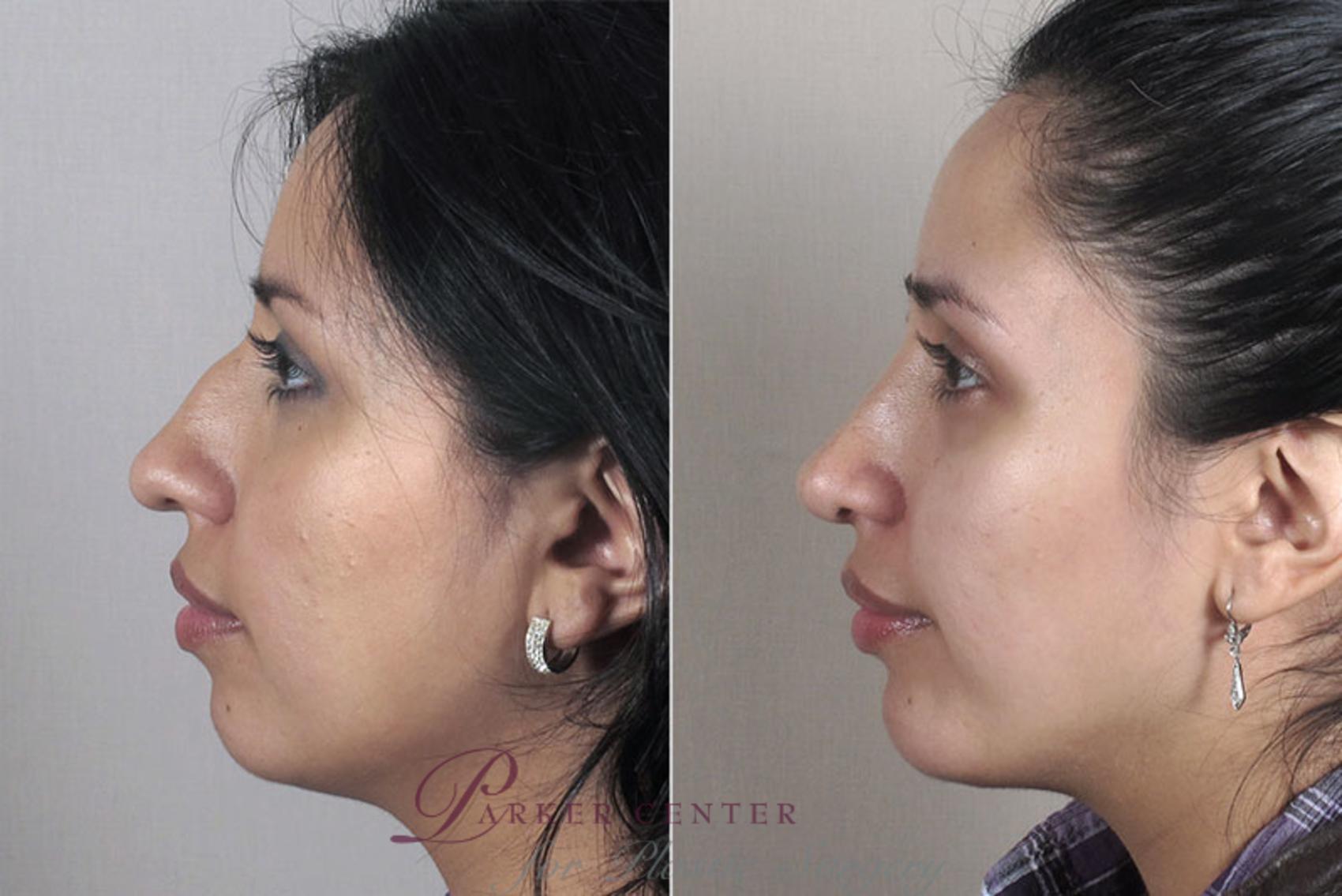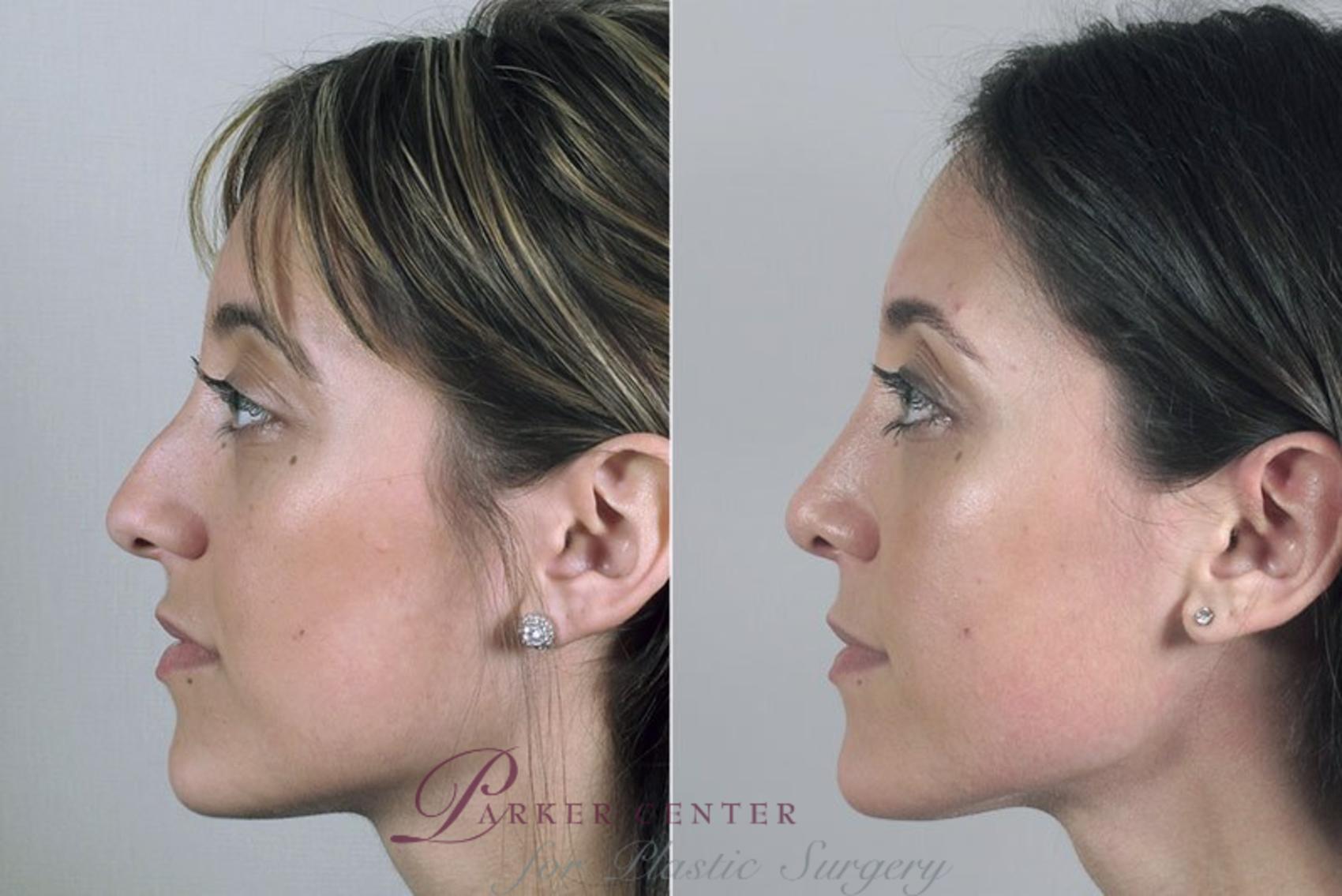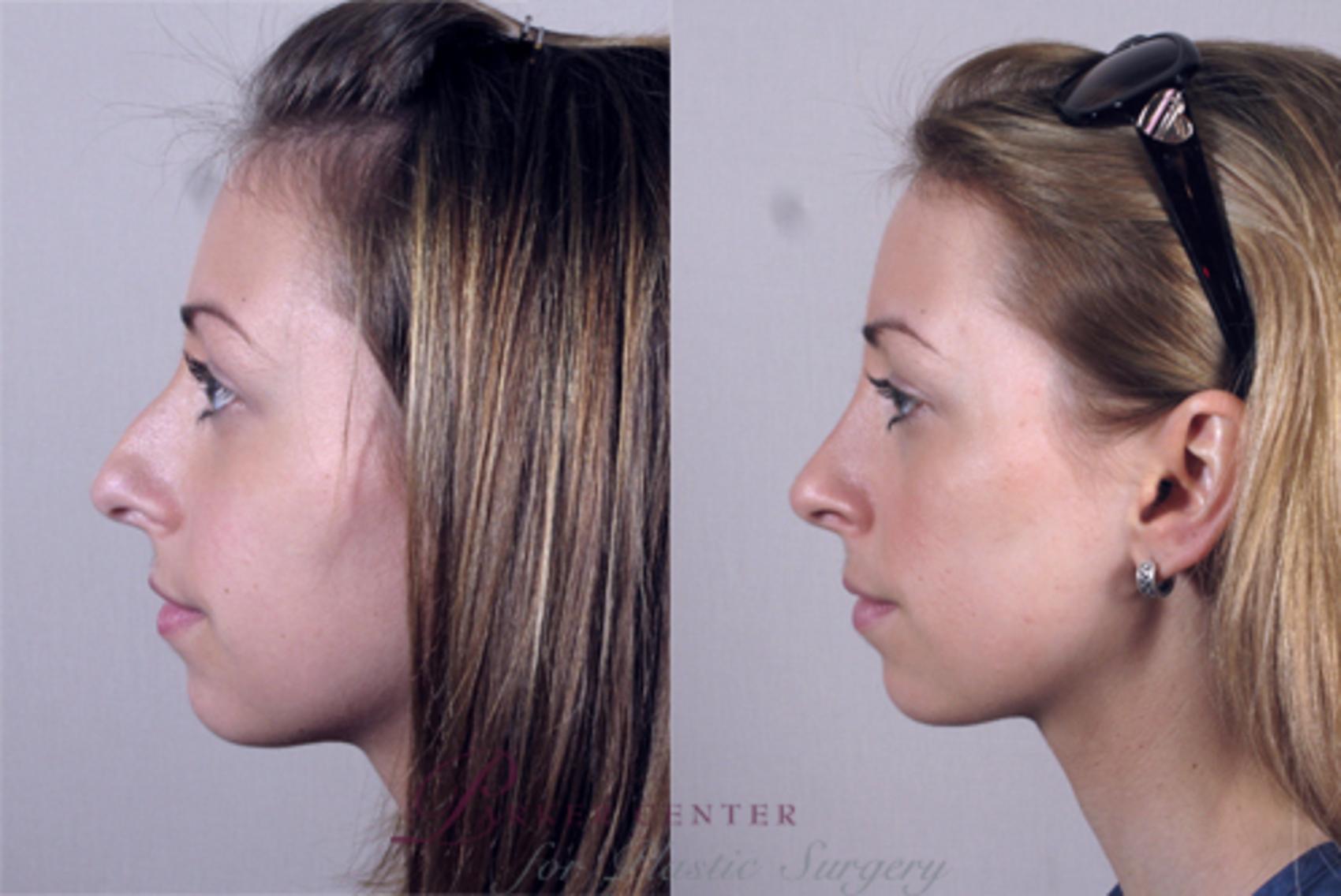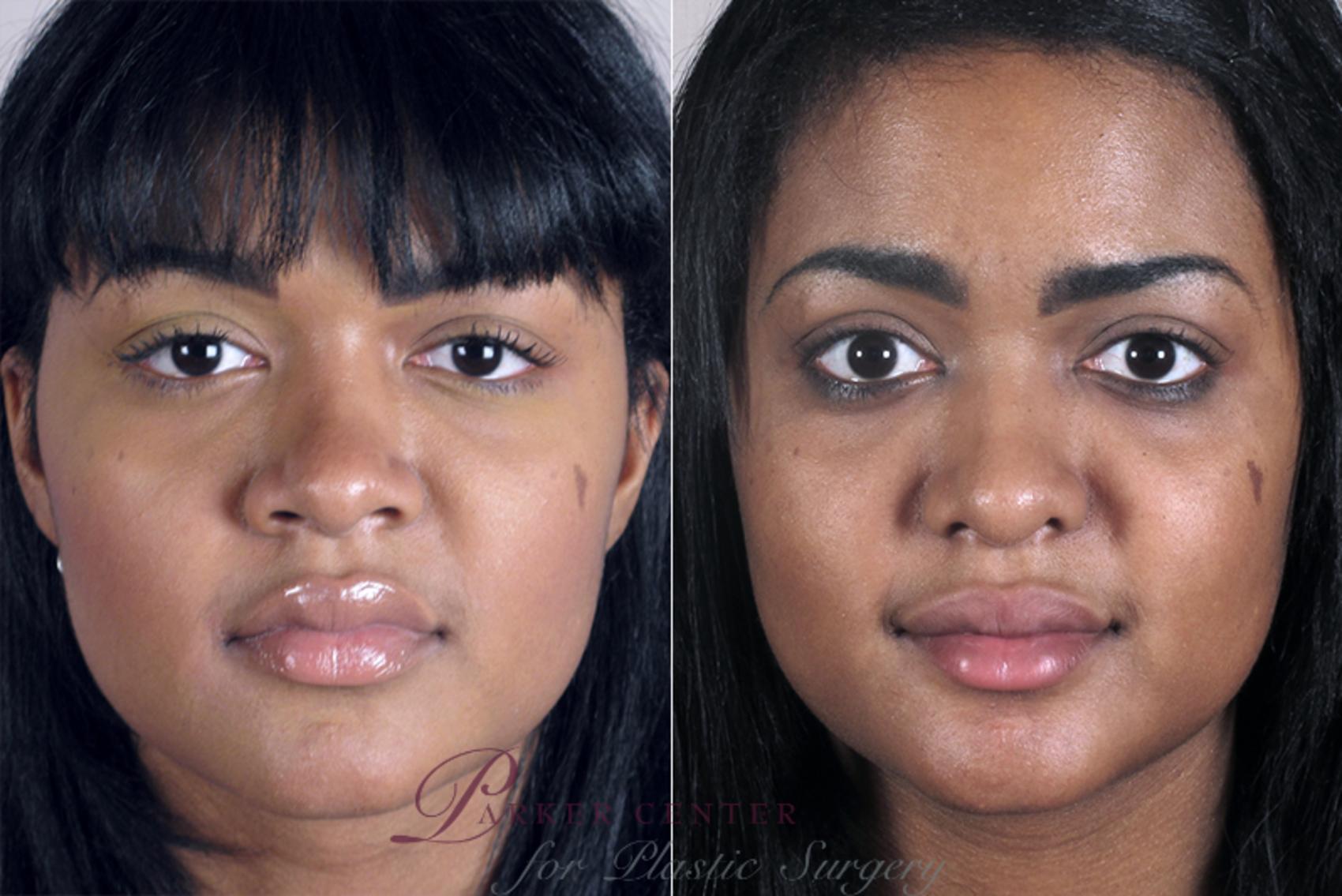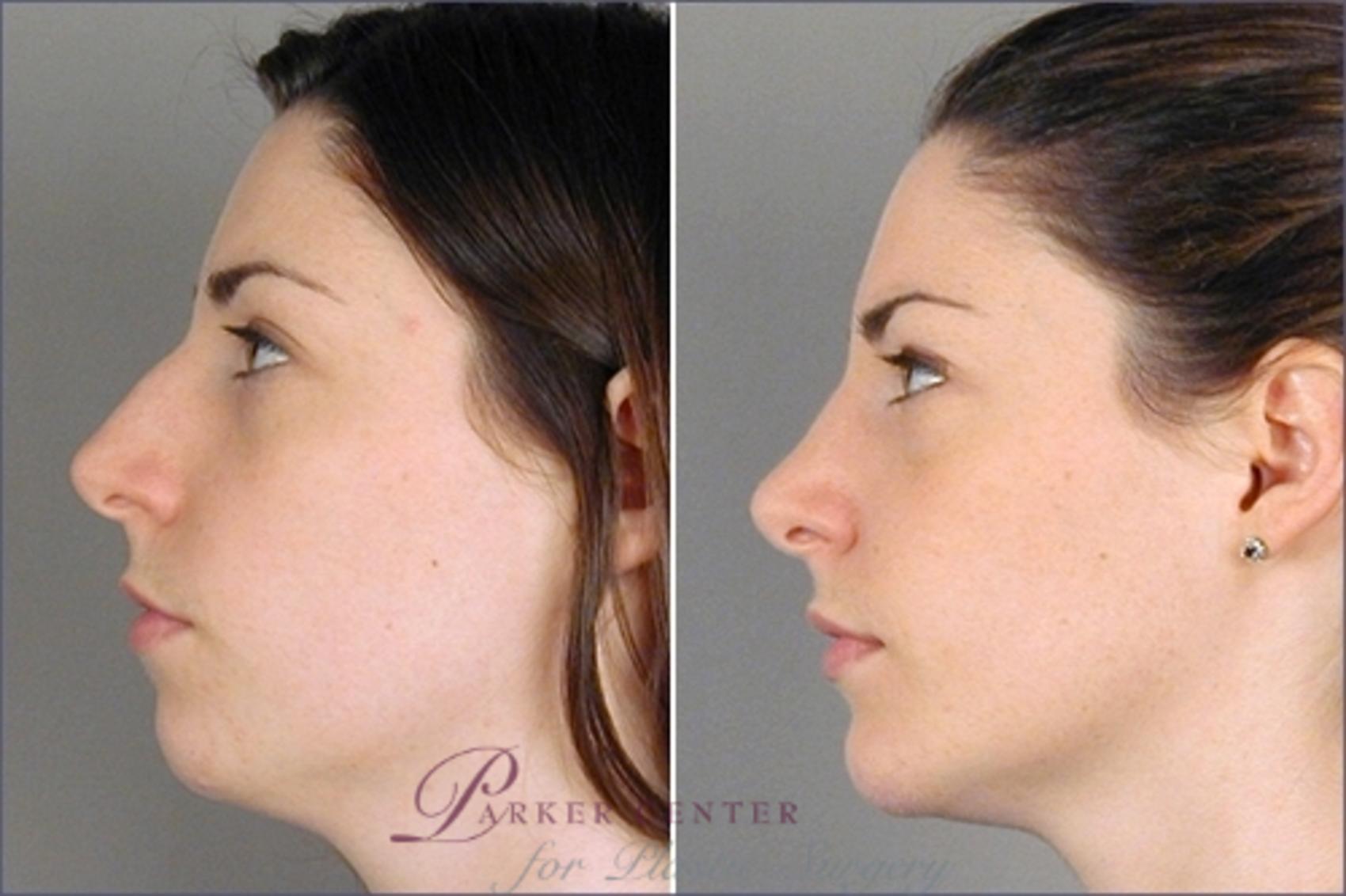Parker Center for Plastic Surgery
122 East Ridgewood Ave
Paramus, NJ 07652
Phone: (201) 967-1212
Monday, Tuesday, Thursday, Friday: 9 a.m.–5 p.m.
Wednesday: 9:00 a.m.–7 p.m.
Saturday: 9 a.m.–2 p.m. (medical spa only)
The Parker Rhinoplasty
An overly large or misshaped nose that detracts from other attractive features is one of the most common reasons people feel self-conscious about their appearance. Dr. Paul Parker performs rhinoplasty surgery (nose job) for patients from Paramus, Bergen County, and throughout New Jersey to create a more refined, natural nasal contour that complements their other facial features.
The Rhinoplasty Society
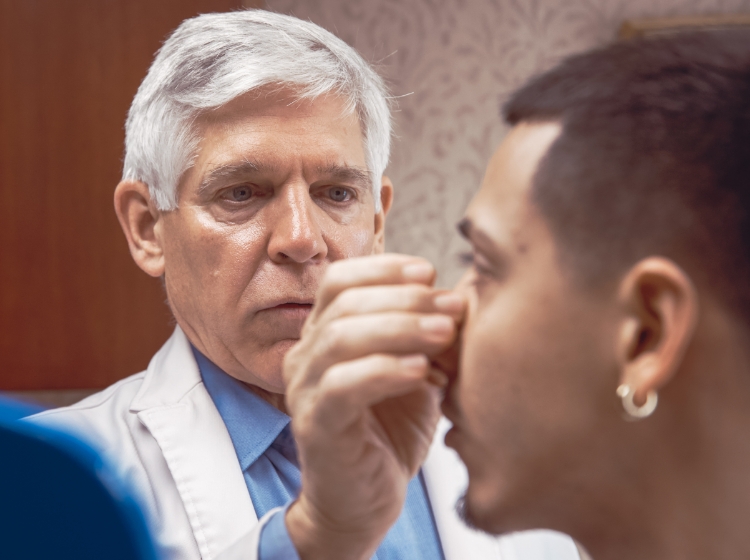
Dr. Parker is a member of The Rhinoplasty Society, a prestigious organization whose exclusive membership includes 150 rhinoplasty specialists worldwide who are known for specializing in some of the most innovative nasal contouring techniques available. Membership is limited to board-qualified surgeons whose credentials, experience, and innovative techniques are thoroughly vetted before they can become members.

What Issues Can Rhinoplasty Treat?
Many women and men consider rhinoplasty to improve the size and shape of their noses. Dr. Parker can also correct breathing problems at the same time for patients with a deviated nasal septum or related internal nasal structural issues. Rhinoplasty performed by Dr. Parker can:
- Straighten a crooked nose
- Reduce excessive nasal tip projection
- Refine or reduce a bulbous nasal tip
- Correct nasal tip asymmetry
- Reduce the width of the nose
- Improve a nose that’s too large for the face
- Reduce the length of the nose
- Correct a nasal bump
- Secondary rhinoplasty: revise poor nose job results
Review more details about the many issues Dr. Parker can correct with rhinoplasty (and see patient photo examples) in this blog post and this rhinoplasty infographic.
The Parker Rhinoplasty Difference
Plastic surgeons regard rhinoplasty as the most complicated procedure they perform, and it takes years to master the precise techniques needed to produce exceptional results. Dr. Parker honed his expertise while training with master rhinoplasty surgeons during plastic surgery residencies at NYU Medical Center and Manhattan Eye, Ear & Throat Hospital in New York City.
Dr. Parker loves the technical challenge and satisfaction of a well-performed rhinoplasty. He has continued to refine his rhinoplasty expertise throughout his career and is now considered one of the top rhinoplasty surgeons, not only in New Jersey but throughout the Northeast and nationally. He performs cosmetic and functional rhinoplasty using “the best of the best in rhinoplasty techniques,” setting him apart from most other plastic surgeons.
“I am extremely pleased with my results and the process of my surgery. Dr. Parker made me feel so comfortable and made sure to follow through with exactly what I wanted. I am so grateful that I chose him for my surgery, and I could not be happier. The results are everything I asked for. The tip is refined and the bridge is more narrow while still looking like a nose I could’ve been born with. It’s so natural and beautiful.”
5-Star Vitals.com review, August 30, 2022
Dr. Parker’s Personalized Approach to Consultations
Your consultation is a critical part of getting the results you want. Dr. Parker spends as much time with you as needed to ensure he understands your goals and fully educates you about your options so you can make a well-informed decision.
When he first meets with you and examines your nose, he considers:
- What are your concerns?
- What is your unique nasal anatomy?
- Have you had previous nose surgery?
Dr. Parker devises a surgical plan tailored for your specific needs based on the information he gathers during the consultation.
“I don’t leave the operating room until everything looks as perfect as I can make it.”
—Dr. Parker
Vectra® 3D Imaging System
During your consultation, we perform a computerized imaged of your nose using Vectra’s 3D imaging system. This is a great way to understand what rhinoplasty can accomplish. It will give you a very good idea as to how your nose should look after Dr. Parker performs your rhinoplasty. During your rhinoplasty procedure, Dr. Parker will have your Vectra computerized images displayed on a larger monitor in the operating room and use them as an artist does their sketches. Dr. Parker has found a high rate of correlation between the Vectra computerized images and patients’ actual rhinoplasty results.
Pre-Op Education Session
One to two weeks before your scheduled rhinoplasty, you will undergo a one-hour, in-office, face-to-face education session with one of Dr. Parker’s Nurse Educators. During this session, the nurse educator thoroughly reviews a detailed information packet to further educate you about your rhinoplasty. This includes a discussion of what to do to prepare for surgery, what occurs the day of surgery, and what to expect after surgery during your recovery. It’s a detailed session that really educates our patients about the entire surgical process at the Parker Center. Patients tell us they love it because they feel so well prepared for their surgery.
Rhinoplasty Techniques
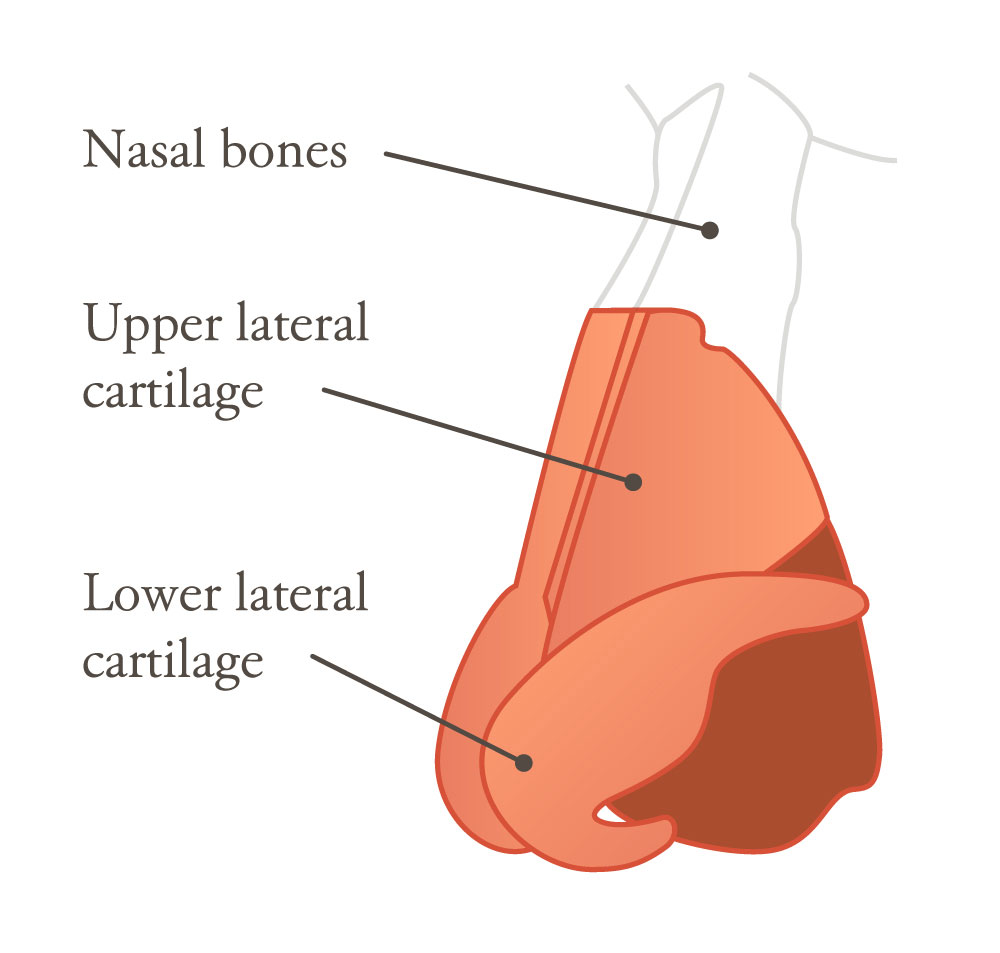
Dr. Parker customizes his rhinoplasty techniques based on the unique anatomical structure of your nose, your concerns, and your desired results. The most common techniques are open structural rhinoplasty, closed rhinoplasty, and tip plasty.
The anatomy of the nose is complex. (See illustration.) The upper 40% of the framework consists of paired nasal bones, with the lower 60% composed of cartilage. Unlike bone, cartilage can be manipulated. The septum—composed of bone and cartilage—separates the nasal passages.
Open Structural Rhinoplasty
Dr. Parker uses the open approach for most rhinoplasty procedures. During an open rhinoplasty, Dr. Parker makes a well-concealed incision on the thin strip of skin separating the nostrils (columella) which wraps around on the inside of both nostrils so it cannot be seen. Using a fiberoptic headlight, he then gently lifts the skin to expose the nasal structures. An open rhinoplasty gives Dr. Parker a direct and very clear view of nasal anatomy, enabling him to make precise adjustments.
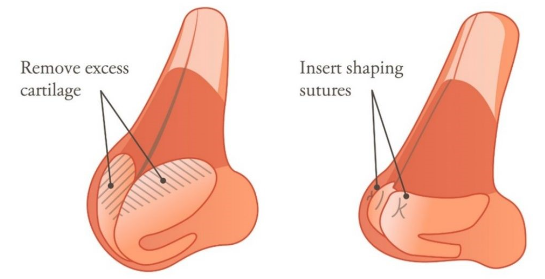
Dr. Parker will most often use the open technique when reducing a dorsal hump and changing the appearance of the nasal tip. In this procedure, he uses a sharpened tool called an osteotome to precisely narrow the nasal bones and sculpt away the hump without creating an unnatural-looking flat spot on the bridge—called an “open roof deformity.” Open rhinoplasty also gives Dr. Parker optimal control to shape a beautiful, natural-looking nasal tip using struts and shaping stitches.
Closed Rhinoplasty
If the procedure involves only reducing a dorsal hump without changes to the nasal tip, Dr. Parker performs a closed rhinoplasty. This can be performed as a “preservation rhinoplasty” because it preserves the bone and cartilage while lowering the nasal bridge. A closed technique does not require an external incision across the columella.
Dr. Parker performs a closed rhinoplasty using a highly specialized surgical technique that involves making incisions deep within the nose. He carefully and strategically removes certain segments of cartilage and bone, creating space for the bridge to drop down or be pushed down to the desired location. This results in an attractive profile that complements your facial features.
Tip Plasty
If the appearance of the nasal tip is the patient’s only concern, Dr. Parker uses this technique to shape a beautiful, natural-looking nasal tip. He can increase or decrease the tip’s projection, rotate or de-rotate the tip, or improve its shape. Dr. Parker commonly uses septal cartilage during the procedure. If there isn’t sufficient septal cartilage available, Dr. Parker will often use alloplastic rib cartilage.
Septoplasty and Septoturbinotomies
At the time Dr. Parker performs a cosmetic rhinoplasty, he can address structural issues related to decreased breathing through the patient’s nose. This includes a septoplasty to help straighten a deviated septum and/or remove the crooked portion of that septum. In addition, he can perform septoturbinotomies, which involves pushing out the enlarged side wall structures called turbinates to mechanically open the airway. If nonsurgical issues such as allergies or chronic inflammatory rhinitis cause the patient’s breathing issues, their improvement in breathing may be limited.
Chin Augmentation—Should I Get a Nose Job, Chin Implant, or Both?
Balanced facial features are the hallmark of an attractive face, particularly the refined facial profile people seek in “selfies.” Together, the nose and chin are important in helping determine your profile. Many patients achieve optimal facial balance with a chin augmentation at the same time as rhinoplasty. This combination procedure is performed on approximately 20% of Dr. Parker’s rhinoplasty patients and adds no extra recovery time.
What Is Secondary/Revision Rhinoplasty?
Dr. Parker performs secondary rhinoplasty, also called revision rhinoplasty, to help Bergen County patients correct deformities from prior rhinoplasty surgery. These procedures are typically more complicated than primary, or first-time, rhinoplasty. Secondary rhinoplasty surgeries are almost always performed after waiting at least 12 months following the prior procedure.
The intricate nature of the nasal structures, scar tissue, and altered cartilage and bone from prior surgery most commonly make secondary rhinoplasty a more complex procedure. Accordingly, Dr. Parker almost always uses an open rhinoplasty technique for these surgeries. Cartilage grafts are often needed to replace or support the nose as part of a secondary rhinoplasty procedure.
The best rhinoplasty is commonly the first, or primary rhinoplasty, and one that will not have to be redone. Dr. Parker’s revision rate following primary rhinoplasty surgery ranges from 5% to 10% and most often is needed for simply rasping a dorsal callus, scar tissue which can develop over the nasal bones after reducing a dorsal hump.
Your Surgery
For your safety, Dr. Parker performs all rhinoplasties (nose jobs) using general anesthesia, administered by an experienced, board-certified anesthesiologist who is present throughout the procedure. Surgery may take anywhere from 30 minutes to 3 hours, depending on its complexity.
Dr. Parker inserts several very fine sutures into the columellar incision in an open rhinoplasty. All sutures are inside the nose and dissolvable in a closed rhinoplasty. A light plastic splint is applied to protect the nose in almost all cases. Dr. Parker never uses nasal packing because patients don’t like it and it is unnecessary. You will recover in our Post Anesthesia Care Unit (PACU), assisted by one of our experienced, nurturing registered nurses. Patients typically return home after 1 or 2 hours.
The columellar sutures and external splint are removed 1 week after surgery.

Paul M. Parker, M.D., FACS
Board-Certified Plastic Surgeon
Known for his surgical talent and caring personality, Dr. Parker has been serving the community for over 35 years. He has dedicated his practice to the education, safety, and comfort of his patients—making each one feel as important as family.


Rapid Recovery Rhinoplasty
Our rapid recovery protocols help patients avoid extensive bruising, swelling, and pain after rhinoplasty surgery. To make your recovery as smooth as possible, we use a combination of oral medications both before and after surgery, as well as other medications during surgery, that help minimize swelling, bruising, and pain. Most commonly, TYLENOL® or TYLENOL® Extra-Strength is all that is necessary to supplement the medications we give you. We also use postoperative lymphatic drainage massage to accelerate healing. Our specially trained massage therapist performs lymphatic drainage massage once weekly during the first 3 weeks after your surgery.
Even though the recovery timeline can vary depending on the patient, this is what you can expect in general:
First week: Swelling and bruising peak. During this time, you will wear a plastic splint to protect the nose as it heals. When the splint is removed 7 days after surgery, swelling and some bruising will be present. Patients are excited to see their improved nose shape, even this early in recovery.
Weeks 1 to 2: Return to work and social activities.
Weeks 2 to 3: Gradually resume exercise (wait at least 4 to 6 weeks for swimming and contact sports). Dr. Parker and his team will guide you through this during your recovery depending on your particular situation. You can apply camouflage makeup if needed. Although much of the swelling will be gone, it often takes about a year for the last 10% of swelling to disappear.
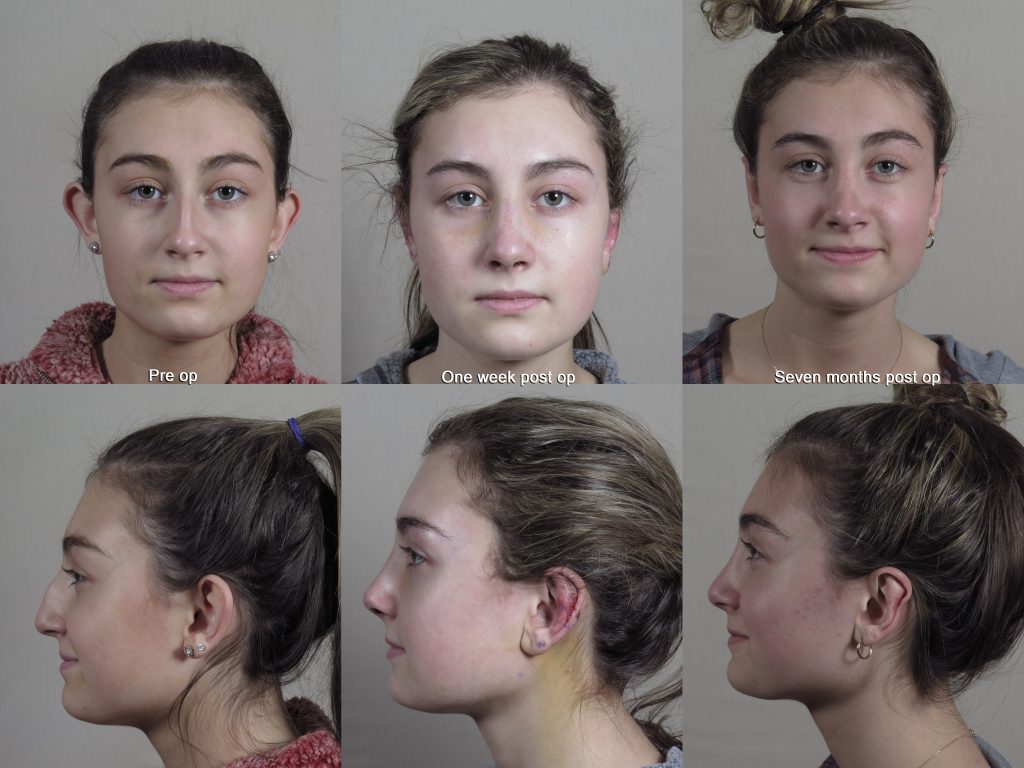
We will spend time during your preoperative education visit to carefully walk you through the details of recovery.
How Much Does a Nose Job Cost in New Jersey?
Our Patient Coordinator will provide you details of the costs for a rhinoplasty at the Parker Center. The total cost will depend on your anatomy, desired results, and the complexity of the procedure. At your consultation with Dr. Parker, we will provide a detailed price quote that includes surgeon’s fees, operating room and anesthesia costs, supplies, and preop and postoperative care.
Frequently Asked Questions
How old do you have to be to get a nose job?
Nose reshaping is one of the most common procedures requested by teenage patients. Having a nose that is in proportion to your features can help you feel better about the way you look, but it is important to approach your decision thoughtfully. Rhinoplasty can only be performed safely and successfully after the nose has finished developing, typically by age 14 to 15 for girls and 15 to 16 for boys.
How many years does a nose job last?
The changes made by rhinoplasty are permanent. Your results will evolve during the first year after surgery and then more gradually as you age. A traumatic injury to the nose can also alter the results of rhinoplasty surgery.
How painful is the procedure?
The surgery itself is performed with the patient under general anesthesia, so you will be comfortable during the operation. An experienced board-certified anesthesiologist is present throughout the procedure. While a plastic splint is placed on your nose to protect it, there isn’t any nasal packing inserted; it’s not comfortable and just not necessary. There is some discomfort during the initial recovery phase, but many patients are pleasantly surprised that the recovery is much less painful than anticipated. The medications we give in our rapid recovery protocols are very effective in managing any discomfort you experience; usually TYLENOL or TYLENOL Extra-Strength are the only other medications needed.
How long after surgery will I need to protect my nose?
You should wait 4 to 6 weeks before participating in contact sports or other activities that pose a risk to your nose. It’s also best to wait 4 to 6 weeks before wearing glasses again. Dr. Parker and his team provide personalized recovery instructions based on the specifics of your procedure and desired activity level.
Will a nose job change my face?
It is important to Dr. Parker to produce rhinoplasty results that look very natural and in proportion to your face. When he asks his rhinoplasty patients several months after surgery about feedback they have received from others, their most common response is, “no one notices that I had my nose done.” When you look at their pictures before and after surgery, the changes are evident, but the natural-looking nose Dr. Parker has created—and his blending it into the patient’s face—is why people don’t realize a rhinoplasty has been performed.
Is the surgery really worth it?
This is a very personal question that only patients can answer for themselves. Rhinoplasty is one of the most popular plastic surgery procedures performed in the U.S., and users of the RealSelf website rate it as 91% “worth it.” Typically, patients who are happy with their results have reasonable expectations for their outcomes and choose a rhinoplasty specialist to perform the operation.
